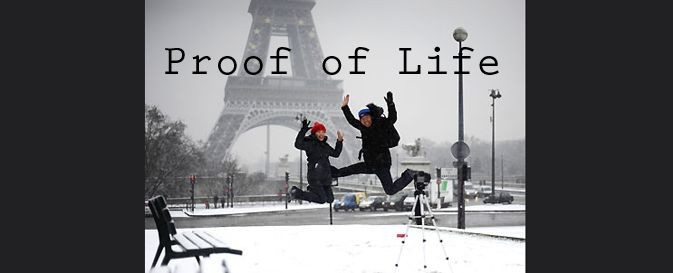Japanese tourists have a long-standing stereotype of carrying big cameras and taking pictures of themselves wherever they visit. One possible explanation for this phenomenon is that many Asians
do not value ‘scenic’ pictures. The purpose of picture-taking is not artistic, or even to reinforce the memory, but to prove to friends and relatives they were actually ‘there’. So they place
themselves in the picture as proof of life.
Sure, it serves to remind themselves of their travel adventures as well. It is pleasant to see happy faces and relive the moment. Think about it, even in American culture picture-taking is
associated with special events like birthdays and weddings, and also vacations. Pictures are a record of those experiences, many of which are significant because they mark lifespan milestones,
and therefore can never be repeated. Most are celebratory, everyone in the pictures is happy.

Such pictures create opportunities to reminisce. And it is not just the event we choose to recall, but the feelings and emotions that accompanied the event. Maybe that is where the “Smile!” tradition comes from. Pictures are supposed to represent happy emotions.
Selfies, the product of taking a picture of oneself with a smartphone, have emerged as a worldwide phenomenon. The ubiquity of smartphones and seemingly unlimited digital memory have changed the
rules of picture-taking.
EVERYTHING is now a special event. Whereas the cost of developing film once limited one to taking pictures that numbered somewhere in the hundreds per year (which is probably an exaggeration),
the absence of any direct costs means digital natives (young people) are accumulating pictures by the thousands (not an exaggeration). Okay, not just young people; proud grandmothers come in a
close second.
And it’s not just the numbers; the ‘subject matter’ is also changing. Selfies include a wider range of facial expressions than just smiles. As long as one is taking a selfie, what’s the harm in
expressing ten different emotions? For some, that has led awkwardly to lewd gestures and depictions that flaunt moral and ethical values.
Instead of fretting that yet another technology has emerged that contributes to the decay of traditional culture, it is more useful to reflect on what the current application of technology (in
this case, selfies) means. Consider the following. Population growth and urbanization means more people are living closer together than ever in history. At the same time, television and personal
computing; now combined in a single handheld device; contributes to a growing sense of social isolation. ‘Community’ is no longer face-to-face but Facetime-to-Facetime; measured not by the
quality of personal relationships but by the number of Friends in a social media app.
From that perspective ‘selfies’ may be a symptom of lost identity. Reviewing them (often immediately after they are taken) serves as ‘proof of life’. They provide an intrapersonal perspective
(self-reinforcement) that is becoming more prominent as physically present (interpersonal) relationships are becoming harder to sustain. In other words, whereas in a bygone time we could see
ourselves in the eyes of others as we conversed eye-to-eye, we are now adapting to meet this need via the mirror of the selfie.

